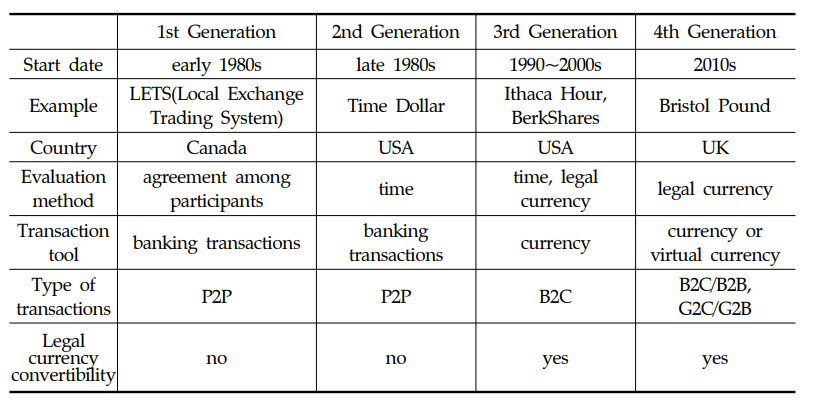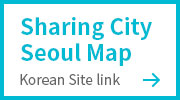List
Story > NEWS > Detail
[Resources] A Case Study on the Regional Activation of Shared Economy in Foreign Countries - North America-
It will review cases in major countries such as North America, Europe and China that have developed regional economies by utilizing shared economies.
In the case of North America, we look at the resource exchange sharing platform and community currency in the U.S. and Canada, and in Europe we look at Germany's job platform and innovation network, Britain's shared economy pilot city and private cooperation-based shared economy. Finally, in the case of China, we look at the shared medical platform.

<share Tompkins>
First, let's look at the case in North America. North America means an area that is comparable to South America in the name of an area encompassing the United States and Canada. First, let's look at the shared platform of resource exchange. Some parts of the U.S. operate sites that support barter between members of the community. Founded in 2009, Share Tompkins of New York State in the U.S. plans and shares relevant information offline for a local barter transaction event (Community Swap Meet). In Canada, the Toronto-based Swapsity is interchangeable with any barter object that users want to exchange for when they post exchangeable items, technologies, services, etc. on the site. However, there are limitations to active use of such barter support sites due to the difficulty of matching among users and simple information service provision.
Meanwhile, there are cases in which local governments operate shared platforms in the form of "tool libraries" that lend idle assets to local residents. In the 1970s, Columbus, Ohio, the U.S. government established a tool library for renting various tools to community members and started renting tools to individuals or non-profit institutions living in the area for free. First-generation tool libraries, which used to manage tool status in catalog format, will later develop into tool library models utilizing online platforms, and the West Seattle Tool Library in Washington State, established in 2009, will disclose the inventories of tools for house repairs, garden management and vehicle maintenance through online platforms and provide rental services. Users can check the details of tools that can be rented out through the tool library, rental fees and duration of rental, and even a dedicated workshop can be used as a fee if necessary.

<West Seattle Tool Library logo>
As a second example, let's take a look at the revitalization of the local economy by using the community currency as a common economy. Community currency, which has a long history, is defined as currency that is used only in limited areas by supplementing state-led legal currency and is also used by various names such as local currency and supplementary currency. After the Great Depression in the 1930s, community currencies were introduced with the aim of boosting the local economy, which was hit hard economically, and interest in local currencies began to emerge, especially in the United States, Germany and Austria. Since then, in the 1980s and 1990s, the modern community currency has been used not only in major advanced countries such as the United States and Britain but also in developing countries such as South America and Asia, with the aim of protecting low-income people, expanding volunteer activities and boosting the local economy. Launched in the early 1980s, the Local Exchange Trading System (LETS) was established with the aim of establishing cooperative social relations with exchange trading networks capable of trading goods and services among community members, and the subsequent emergence of Time Dollar (Time Dollar) was introduced to deposit its service activities in Time Bank and make them available later.

<The Development Process of Local Money>
Community currencies introduced since the 1990s were issued with a focus on revitalizing the local economy, allowing for the conversion to the legal currency. In fact, the British-based New Economics Foundation argues that £1 is worth £1.76 for the local economy if consumed within the region, but £0.36 for offshore consumption. Introduced in 1991 in the U.S. city of Itaca, New York, it was issued in real currency in the form of banknotes, and regardless of service content, an hour was used with value equivalent to 1 Itaca hour (10 dollars), contributing to revitalizing the local economy. While previous generations of community currencies were mostly used around P2P and B2C transactions, recent community currencies also support transactions in the form of B2B and G2B.

<Bristol Pounds Photo>
The Bristol Pound, which was introduced in 2012 in the U.K. city of Bristol, has helped revitalize the local economy by encouraging the establishment of supply chains among companies in the region, paying local taxes using local currency, and paying local government officials for compensation. This has introduced smartphone-based online payments, which greatly enhance ease of use.
Next time, let's take a look at the case of revitalizing the local economy using the common economies of Europe and China.
It will review cases in major countries such as North America, Europe and China that have developed regional economies by utilizing shared economies.
In the case of North America, we look at the resource exchange sharing platform and community currency in the U.S. and Canada, and in Europe we look at Germany's job platform and innovation network, Britain's shared economy pilot city and private cooperation-based shared economy. Finally, in the case of China, we look at the shared medical platform.

<share Tompkins>
First, let's look at the case in North America. North America means an area that is comparable to South America in the name of an area encompassing the United States and Canada. First, let's look at the shared platform of resource exchange. Some parts of the U.S. operate sites that support barter between members of the community. Founded in 2009, Share Tompkins of New York State in the U.S. plans and shares relevant information offline for a local barter transaction event (Community Swap Meet). In Canada, the Toronto-based Swapsity is interchangeable with any barter object that users want to exchange for when they post exchangeable items, technologies, services, etc. on the site. However, there are limitations to active use of such barter support sites due to the difficulty of matching among users and simple information service provision.
Meanwhile, there are cases in which local governments operate shared platforms in the form of "tool libraries" that lend idle assets to local residents. In the 1970s, Columbus, Ohio, the U.S. government established a tool library for renting various tools to community members and started renting tools to individuals or non-profit institutions living in the area for free. First-generation tool libraries, which used to manage tool status in catalog format, will later develop into tool library models utilizing online platforms, and the West Seattle Tool Library in Washington State, established in 2009, will disclose the inventories of tools for house repairs, garden management and vehicle maintenance through online platforms and provide rental services. Users can check the details of tools that can be rented out through the tool library, rental fees and duration of rental, and even a dedicated workshop can be used as a fee if necessary.

<West Seattle Tool Library logo>
As a second example, let's take a look at the revitalization of the local economy by using the community currency as a common economy. Community currency, which has a long history, is defined as currency that is used only in limited areas by supplementing state-led legal currency and is also used by various names such as local currency and supplementary currency. After the Great Depression in the 1930s, community currencies were introduced with the aim of boosting the local economy, which was hit hard economically, and interest in local currencies began to emerge, especially in the United States, Germany and Austria. Since then, in the 1980s and 1990s, the modern community currency has been used not only in major advanced countries such as the United States and Britain but also in developing countries such as South America and Asia, with the aim of protecting low-income people, expanding volunteer activities and boosting the local economy. Launched in the early 1980s, the Local Exchange Trading System (LETS) was established with the aim of establishing cooperative social relations with exchange trading networks capable of trading goods and services among community members, and the subsequent emergence of Time Dollar (Time Dollar) was introduced to deposit its service activities in Time Bank and make them available later.

<The Development Process of Local Money>
Community currencies introduced since the 1990s were issued with a focus on revitalizing the local economy, allowing for the conversion to the legal currency. In fact, the British-based New Economics Foundation argues that £1 is worth £1.76 for the local economy if consumed within the region, but £0.36 for offshore consumption. Introduced in 1991 in the U.S. city of Itaca, New York, it was issued in real currency in the form of banknotes, and regardless of service content, an hour was used with value equivalent to 1 Itaca hour (10 dollars), contributing to revitalizing the local economy. While previous generations of community currencies were mostly used around P2P and B2C transactions, recent community currencies also support transactions in the form of B2B and G2B.

<Bristol Pounds Photo>
The Bristol Pound, which was introduced in 2012 in the U.K. city of Bristol, has helped revitalize the local economy by encouraging the establishment of supply chains among companies in the region, paying local taxes using local currency, and paying local government officials for compensation. This has introduced smartphone-based online payments, which greatly enhance ease of use.
Next time, let's take a look at the case of revitalizing the local economy using the common economies of Europe and China.



